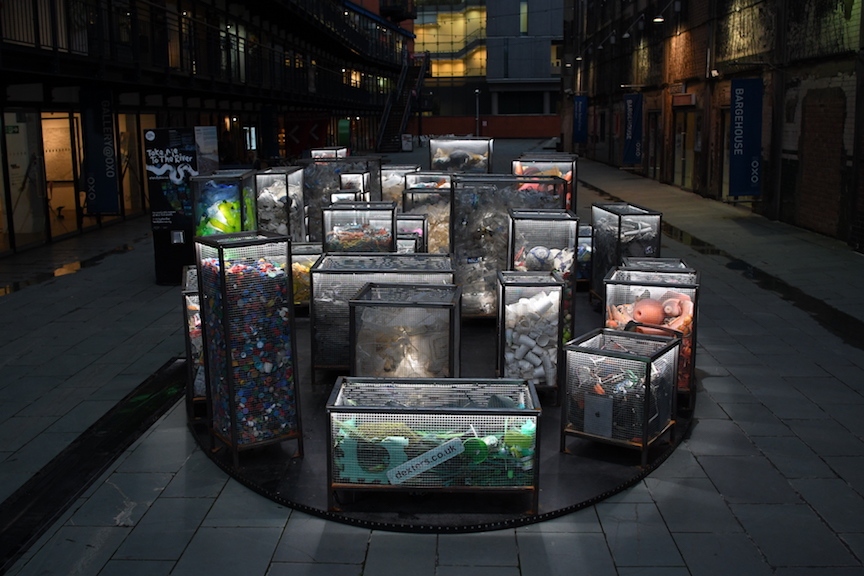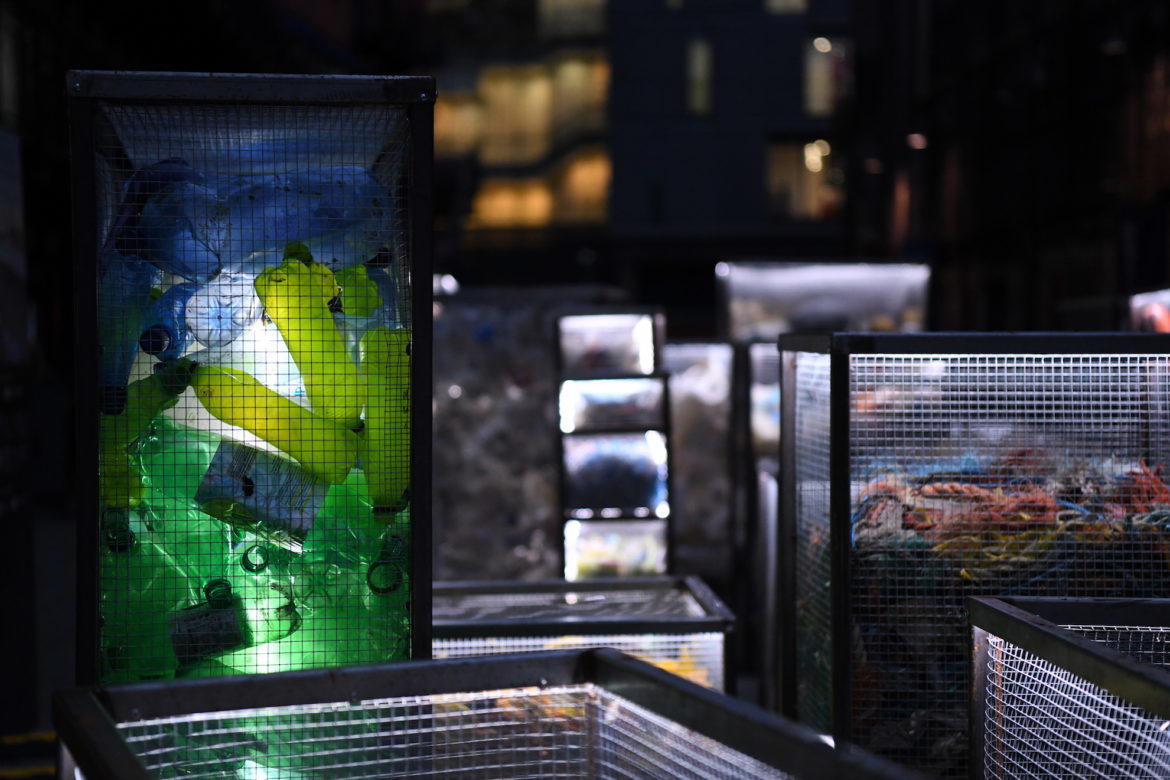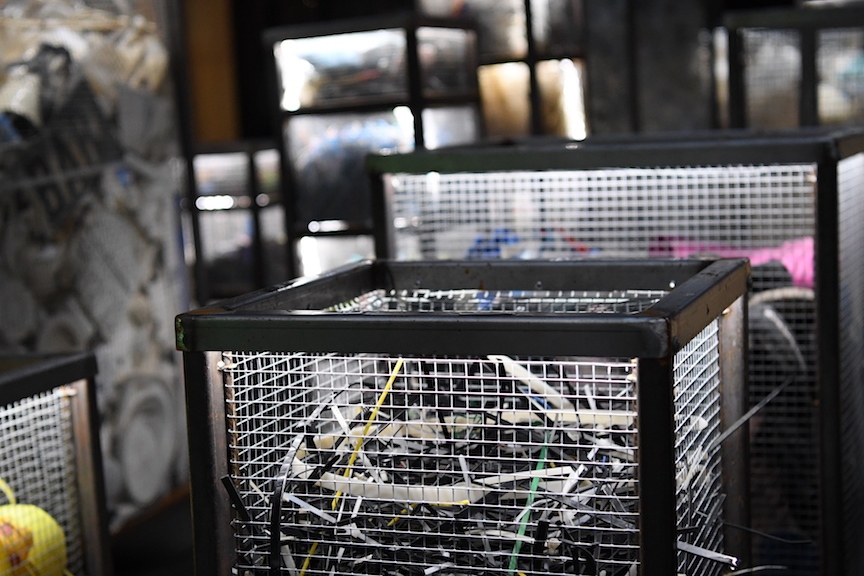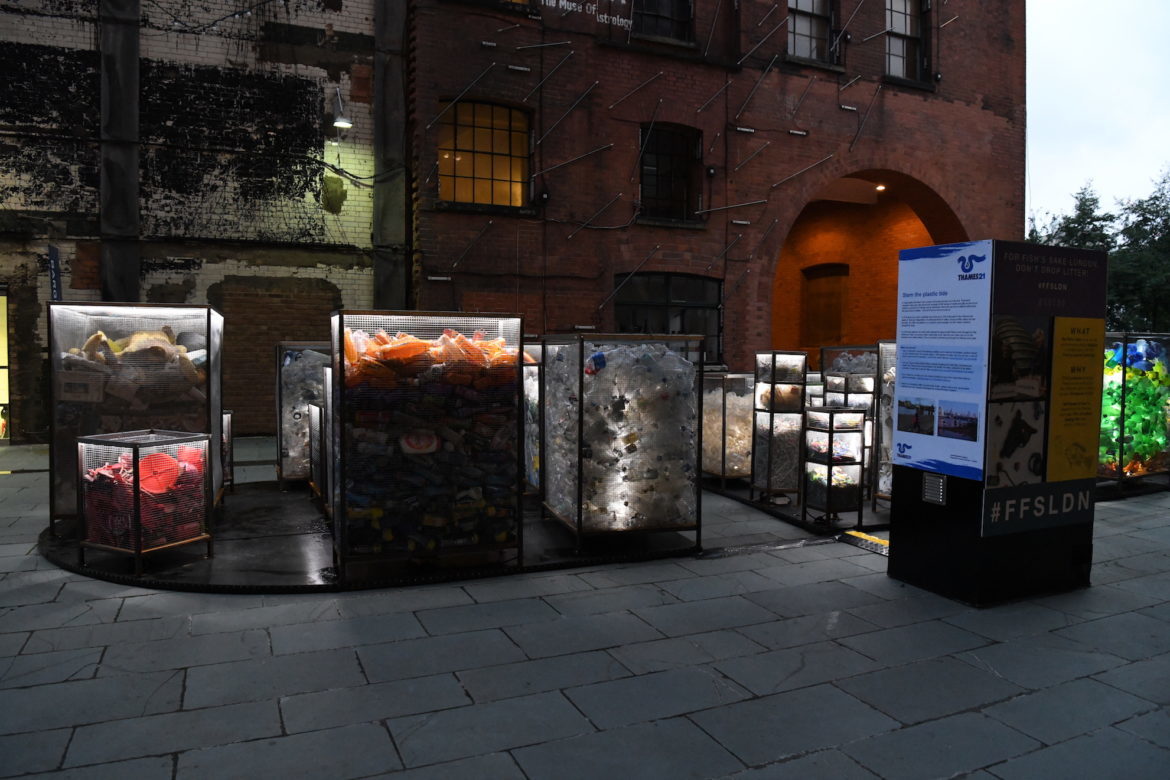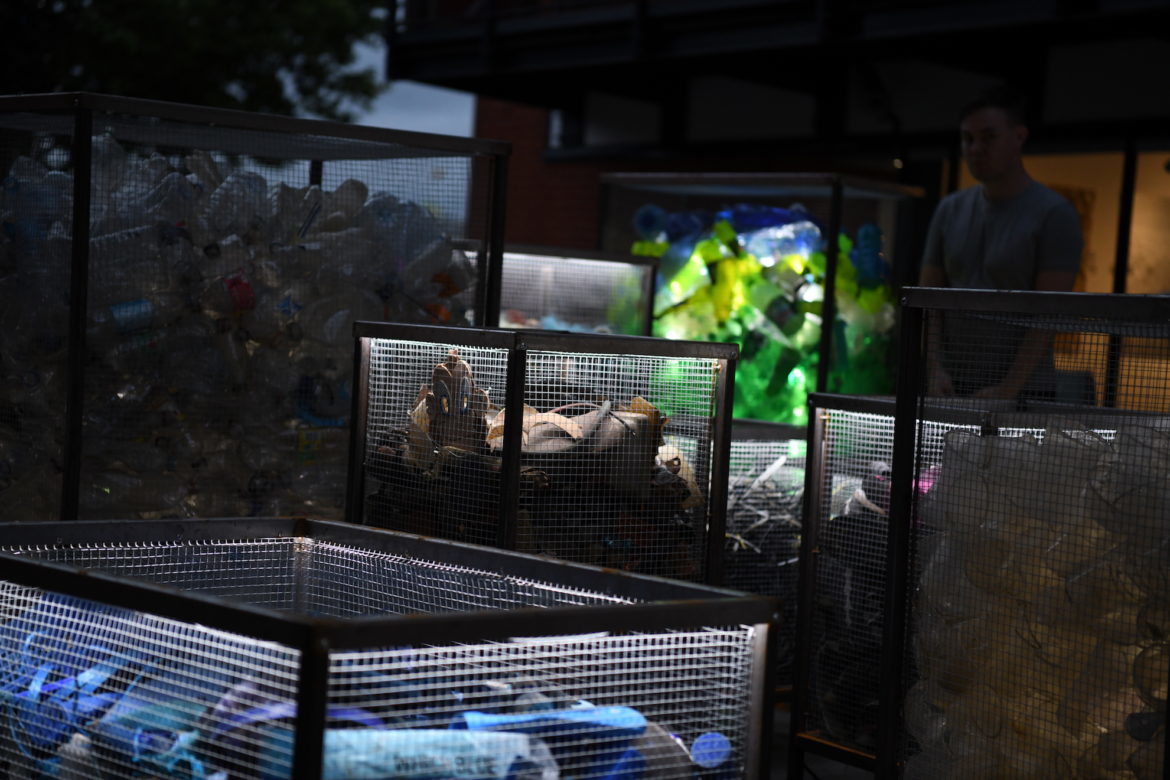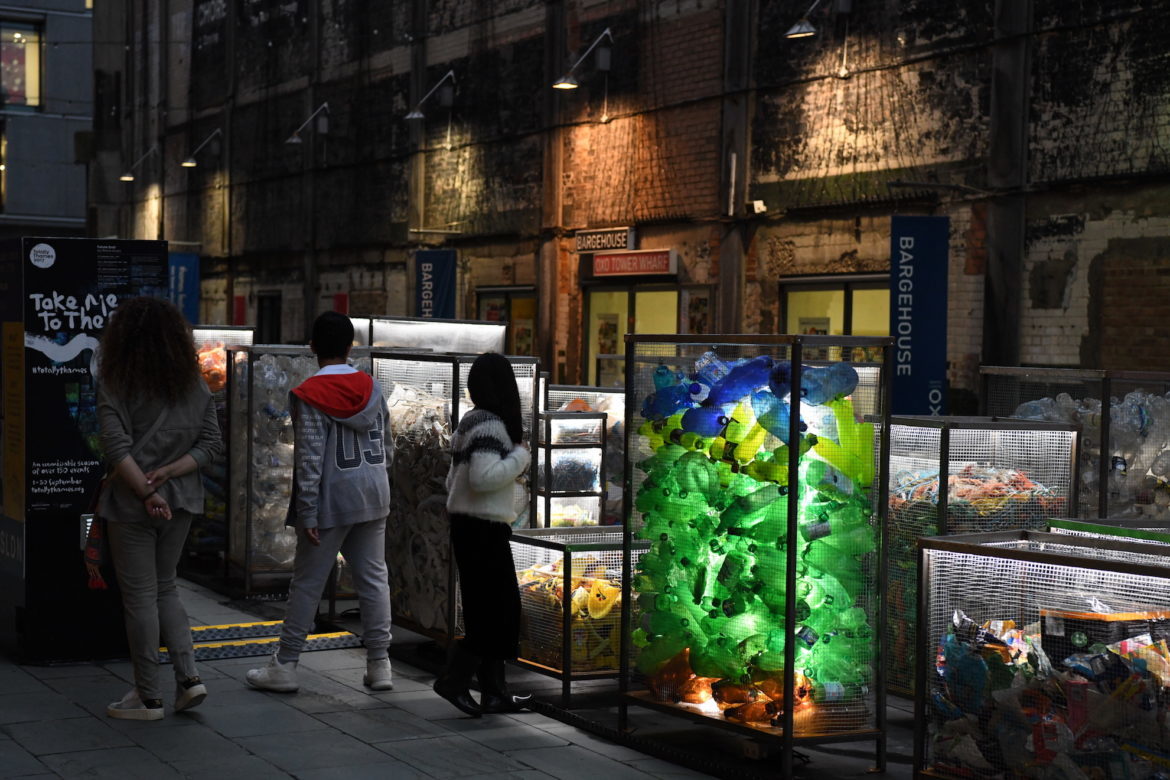Getting down to writing about Mª José Arceo’s latest artistic project ‘Future Dust’ is as difficult as trying to sum it up in just a few lines. If it’s an origin story you’re after, you could say that it all started with 2014’s eXXpedition Crew, which set sail for Martinique from Lanzarote, crossing the Atlantic as part of UNESCO’s Atlantic Odyssey. 14 women embarked on the journey: scientists, designers, film-makers, biologists, ecologists, and an artist, María. With the help of her expedition partners, she was able to explore the impact of microplastics on our environment and our lives. To achieve this, she started to gather up all the microplastics that she came across in order to create little crystal installations that would be shown in her future exhibits. Anyone who sees one of these artistic interventions finds themselves faced with a poignant story about microplastics that begins and ends with us.
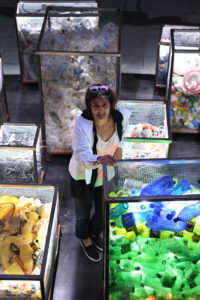
‘Future Dust’ by Mª José Arceo. Photos © Cristina Calvo
In her latest piece, María José has overcome a multitude of obstacles to create an enormous installation – ‘Future Dust’. The exhibit is a damning representation of the footprint that we and our incessant consumption leave behind. The exhibit leaves no room for doubt, and offers no get-out clause. We’re faced with the stark reality that we must change our habits.
Her work is made from plastic waste gathered from more than 40 beaches along the Thames. Once it’s been collected, it gets washed and then put on display. Considering the tons of plastic we’re talking about here, this is a mammoth undertaking – one that María and project manager Laura undertaken all by themselves. Her eagerness and determination to make people consciously think about our excessive habits led María José to construct this installation. It came after months of workshops and talks where she and Laura invited people to take part in the collection and sorting of the plastic.
There weren’t your everyday workshops, though. Sorting pieces of reclaimed plastic by size, colour and type forces you to look at the reality of the situation from a different perspective. Patterns start to emerge that beg us to change our day-to-day routines. Yellow: the plastic shells inside Kinder Eggs. If we complained en masse, could we convince that company to stop making these shells from plastic? White: cotton buds. Shouldn’t we stop throwing these plastic sticks into the water? Couldn’t we make them from a different material? Bamboo or wood, for example? Transparent: thousands of plastic bottles.
Should we instead be expected to use our own reusable bottles? Round: lids, lids, lids. Could we all start to get our takeaway coffees in our own mugs or flasks? Orange: dolls. Wouldn’t it be great if we all learnt to use wooden dolls instead? The list goes on and on. An endless amount of everyday objects that, one way or another, end up in our own bodies… How? As microplastics, this dust that María José Arceo tells us about in Future Dust. Fish mistake microplastics for plankton and eat them. They eventually end up in our stomachs, which can lead to problems like cancer and infertility.
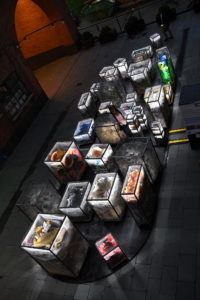
‘Future Dust’ by Mª José Arceo. Photos © Cristina Calvo
It’s estimated that by 2050, there’ll be more plastic in the sea than fish. María usually starts her talks by telling the audience about the time she found the sole of a shoe from the Tudor era (which were made from animal hides back then) floating in the Thames. Can you imagine the impact of that kind of inorganic plastic waste being dumped for years and years? Her enormous installation is a visual representation of the impact we humans are having on our environment. A massive man-made footprint full of plastic collected from the banks of the Thames over the last few months.
The simple fact of the matter is that the possibility for change is in our hands, but institutions, governments and laws still don’t consider it a priority. Not only is there a lack of action and investment in building awareness around this problem, but it’s also telling that María José received barely any help at all while constructing her piece. A piece that would require resources that aren’t exactly easy to find: a task force, a group of people to collect the plastic waste with her, the resources to clean what they collect, transportation to move the plastic. All this makes this artist even more worthy of our admiration, on top of the fact that she dared to confront our mass consumerism through hours and days of collecting, cleaning and storing plastic waste.The most incredible thing of all is how she uses hours of hard work to convert rubbish into a beautiful and convincing piece of art, Future Dust. Nightfall lends a certain poetry to the work as Dutchman Tim Scheffer’s lighting makes these plastics float and glisten again. As you get nearer, they start to tremble once more, and you can just tell that they are calling out for something to change right now, right here. After all, it all boils down to this: Future Dust starts and finishes with our own actions.
[su_note note_color=”#eaeae9″]Translated to English by Ben Ffrancon Davies[/su_note]

